#when dinosaurs roamed america
Text
#palaeoblr#prehistoric life#jurassic park#walking with dinosaurs#nyehehehehe#dinosaurs#prehistoric planet#land before time#when dinosaurs roamed america#dinosaur revolution#prehysteria#ice age#disney's dinosaur#we're back!#dinotopia#dinoverse#jurassic world#prehistoric park#chased by dinosaurs
881 notes
·
View notes
Text
TRM Round 1: When Dinosaurs Roamed America (Narrated by John Goodman) vs. We’re Back! (Rex, voiced by John Goodman)

When Dinosaurs Roamed America (Narrated by John Goodman) – Here we have a family of T. rexes demonstrating the power of cooperation. When one of the younger T. rexes tries hunting alone, he struggles, which shouldn’t be much of a surprise. Most hunts, after all, end in failure. The next day, with the whole family working together, the rexes are able to separate an Edmontosaurus from the herd and lead it into an ambush by the mother T. rex. Sadly, their victory is short-lived, as this is yet another documentary that takes place in the last moments of the Cretaceous.

We’re Back! (Rex, voiced by John Goodman) – Rex is a kindhearted Tyrannosaurus who, along with some of his prehistoric peers, is brought to the present of 1993 by the inventor Captain Neweyes. On the way, the dinosaurs are given cereal that grants them human intelligence, thus allowing Rex to perform a musical number in the Macy’s Thanksgiving Day Parade. Things get weirder from there, as the dinosaurs then have their intelligence drained by the inventor’s evil twin to be used in his circus of fear. Neweyes manages to rescue the dinosaurs and take them to the museum, where they can spend their lives teaching kids about dinosaurs and, in the case of Rex, telling a runaway bird his life story during a game of golf.
#t. rex madness#t. rex#tyrannosaurus#tyrannosaurus rex#dinosaur#dinosaurs#when dinosaurs roamed america#we're back!#john goodman
141 notes
·
View notes
Text
If you’ve finished watching Prehistoric Planet, caught the dino bug, and want to watch more, well, I’ve got recommendations for some fantastic older Mesozoic documentaries and shows! I’m only gonna list my faves, but if you have good ones to add, feel free to do so!

Walking With Dinosaurs (1999)
The classic, the one I grew up with. A six episode miniseries that spans the entire Mesozoic, from the Triassic to the Cretaceous. Each episode focuses on a specific location and usually has one specific animal that’s more or less the main character, while also showing off others as they are encountered. The science and effects are 23 years old by now, so don’t expect much fluff or great CGI, but they used what they had very well. It helps a lot that the close-up shots are done using incredibly charming animatronics rather than CGI. The gorgeous music and Kenneth Branagh’s narration add a ton more personality to everything. You will cry about an Ornithocheirus at the end of his journey. There were three special bonus episodes released over the next few years that have Nigel Marven (more on him later) time travelling to see the dinosaurs in person. There are also two sequel series: Walking With Beasts and Walking With Monsters. WWM explores the Paleozoic but went through it too fast and suffers from some ‘Awesomebro-yness’ in my opinion but there’s not much else to turn to if you wanna see the Paleozoic unfortunately. WWB explores the Cenozoic and is every bit as good as WWD. When I had my recovery day after my third covid vaccine I put on all three in chronological order and just marathoned them and the various little aches didn’t bother me all day as I watched the history of the Earth from the Cambrian to the Quaternary.

Prehistoric Park (2006)
Time-travelling Nigel Marven returns from the Walking With Dinosaurs specials to bring back extinct animals to the present. As you might guess, it’s a bit more on the fictional side, but all the animals are really well done and scientific, as are the ecosystems they travel back to. The modern day parts are much more about actually properly running a zoo, including things like enrichment, proper animal care, and cranky zookeepers with a heart of gold becoming Ornithomimus parents than Jurassic Park type scenarios. Nigel doesn’t just get dinosaurs; he goes to the Cenozoic several times and even takes a trip to the Carboniferous for its giant arthropods. Recent enough that feathers are starting to appear on some dinosaurs, particularly the adorable Microraptors. Nigel is an absolute menace and I don’t know who gave him access to a time portal but i’m glad they did. The recent game Prehistoric Kingdom was strongly inspired by this one, to the point of having Nigel voice the tutorials and trailers. Features a friendly herd of Titanosaurs with a disregard for fences causing more havoc than any carnivores ever could.

When Dinosaurs Roamed America (2001)
America’s answer to Walking With Dinosaurs. A single two-hour long documentary spanning the whole of Mesozoic America and really focussing on how the dinosaurs developed between its segments. The only time I ever remember seeing the Early Jurassic depicted, and the only one on this list to treat the end-Permian and end-Triassic extinctions and how important they were for dinosaur evolution. Though it does blame asteroids for them. Very good stuff, aside from a scene where Velociraptors continue eating their prey even as a forest fire sets them on fire. It’s very America-centric, but that’s no weakness. John Goodman makes for a surprisingly good narrator and throws in a sneaky Flintstones joke or two.

Dinosaur Revolution (2011)
This is a bit of an odd one, and it might or might not be your jam, but it certainly is mine. It is essentially a mashup between a dinosaur documentary and dinosaur Looney Tunes. Very silly slapstick segments focussing on specific dinosaurs with somewhat anthropomorphic behaviours get intercut with scientists explaining the latest of 2011 paleontology. The animation is a bit naff but the designs are really good and there’s a lot of feathers. It highlights behavioural traits like intelligence and parental care a lot. Two of its episodes cover pretty much the whole Mesozoic in no particular order, two episodes do Walking With Dinosaurs style covering of a single animal’s story in a single ecosystem. Shunosaurus eats mushrooms and has a bad trip. Lots of mammals go flying after getting thrown about. In a true Blackadder Goes Forth type pivot, the final episode of this very silly slapsticky show has the most haunting and tragic depiction of the K-Pg extinction I’ve ever seen.
#prehistoric planet#walking with dinosaurs#prehistoric park#when dinosaurs roamed america#dinosaur revolution#dinosaur documentaries#feel free to add more
743 notes
·
View notes
Photo

When Dinosaurs Roamed America (2001) VHS tape
[ x ]
48 notes
·
View notes
Text



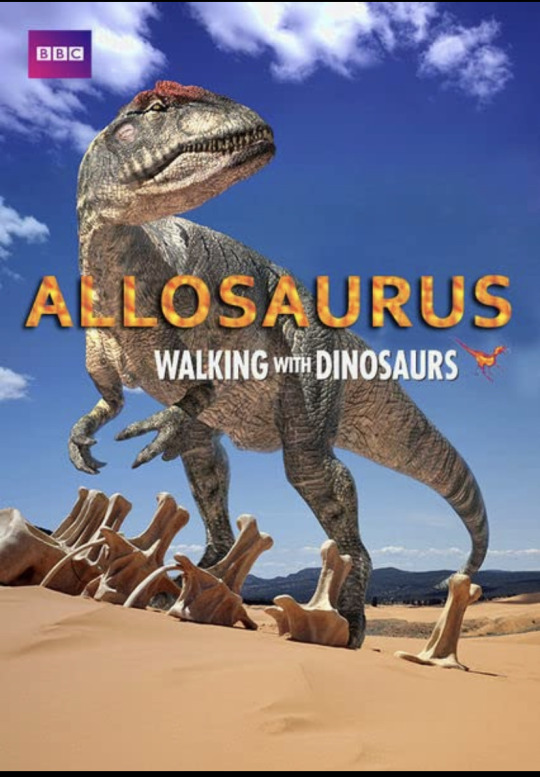


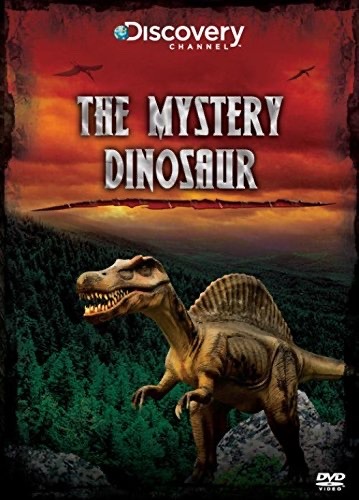


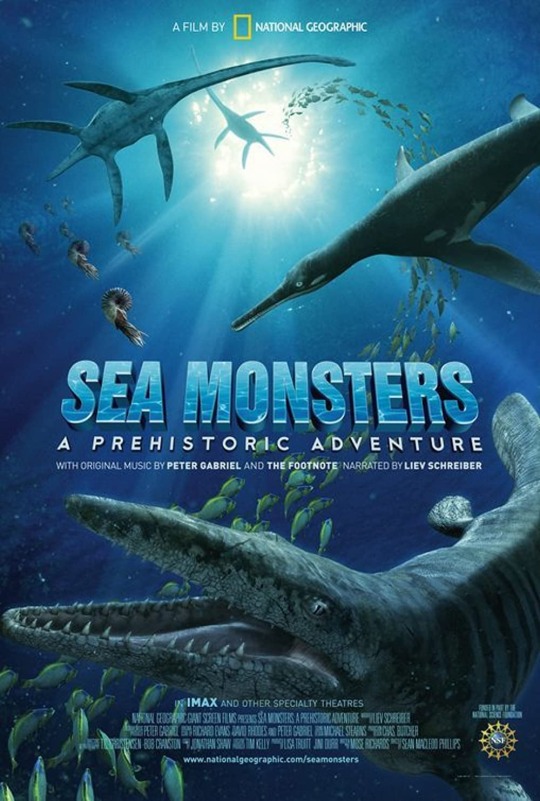
National Dinosaur Day
#walking with dinosaurs#dinosaur planet#prehistoric planet#prehistoric planet 2022#Sea Monster A Prehistoric Adventure#When Dinosaurs Roamed America#Allosaurus: A Walking with Dinosaurs#The Mystery Dinosaur#Dinosaurs : Return to life ?#T. REX: NEW SCIENCE NEW BEAST#national dinosaur day#dinosaur
53 notes
·
View notes
Text
Dinosaur Profile: Zuniceratops

Zuniceratops is a rather special ceratopsian. Despite not being as famous as some of its more famous relatives such as Triceratops or Styracosaurus, it played an important role in the evolution of ceratopsians. Particularly in North America, since they might provide an answer to an old question.
Background:
Zuniceratops christopheri ('Zuni-horned face') was found in the Moreno Hill Formation of New Mexico, America by Christopher James Wolfe in 1996. Dated to have lived around 93 to 91 million years ago during the Late Cretaceous, it's primarily known from the remains of 5 animals and a single skull.

As seen in the picture here, North America looked pretty different from the world today. A shallow interior sea effectively cut the continent in half. New Mexico was one of the states that was partially swamped by this interior sea. The areas that weren't covered by water became prime real estate for acres of coastal forests and swamps, all teeming with various species with flora.

Prehistoric New Mexico may have looked similar to this image from Borderland State Park from Massachusetts. With a diverse mix of ferns, honeysuckles, figs, and other types of vegetation to feed on, it would've been the perfect backdrop for various species of herbivorous dinosaur to thrive.
Evolutionary History:
Despite being native to North America, the ancestors of Zuniceratops actually hailed from Asia. It was believed that the first ceratopsians to have made the crossing over land bridges in the Bering Strait roughly during the mid Cretacous (112 to 100 million years ago to be precise), were relatively small. No larger than a rabbit. They were part of a lineage that was closely related to Psittacosaurus, a family that were bipedal and had only the faintest trace of a frill.

As you can see from the image by Brian Engh, they were far from the giants we would later know them as. The species shown here, Aquilops americanus, was believed to have been the first ceratopsian to make it to North America.
But they wouldn't stay small for long. When the land bridges were swallowed up by rising sea levels, the ceratopsians in prehistoric America began to balloon in size. The frills became more pronounced, and the first horns evolved. Which leads us to Zuniceratops.
Description:
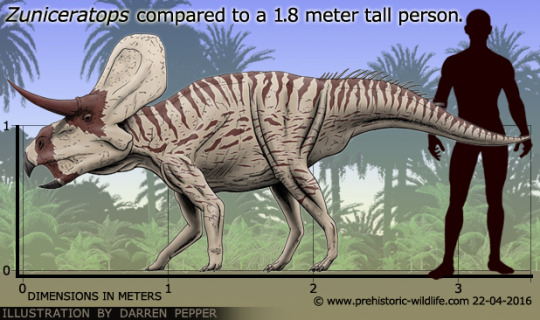
At 7.2 ft long and weighing in at least 175 kilograms by estimations, Zuniceratops was roughly the size of a cow. Fairly small by ceratopsian standards. But compared to its diminutive ancestors, it has evolved dramatically in both posture and headgear. The frill itself and horns are fairly mundane compared to later species, having two horns above each eye without a nasal horn. This bares a striking resemblance to the later Chasmosaurs, Triceratops in particular.
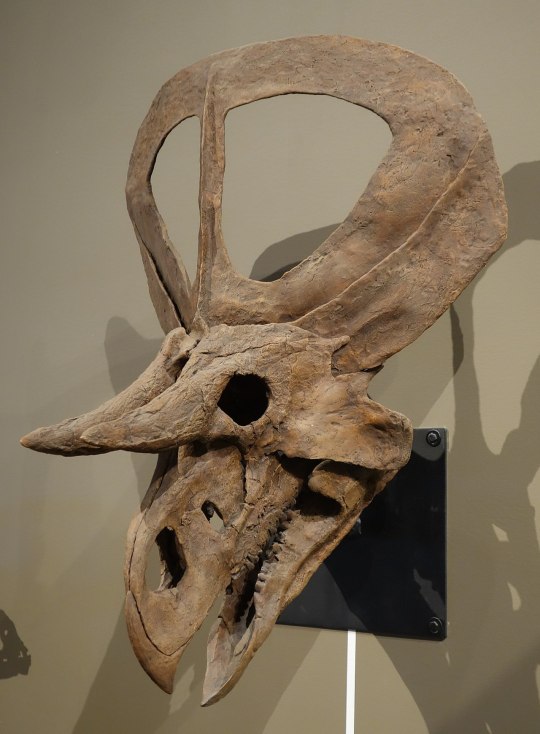
The frill has become significantly more developed. As you can see in this photo of a reconstructed skull, the frill had gaping holes in it to lighten the load. This would've made it less dense than the later Chasmosaur frills (such as Triceratops) and more in line with typical Centrosaur frills (like Styracosaurus). In order to further handle the increased weight, Zuniceratops is a strict quadruped with all four legs supporting it.
What exactly the frill was used for is unclear. The most popular theory nowadays was that males used it to court females during the mating season. Like dear and other herbivores today, healthier and stronger males may have more developed frills and thus would be more successful at both attracting mates and warding off rivals. Due to the frill's lack of density, head to head battles like in later Chasmosaurs may have been a rarity to avoid injury. But this doesn't discount the possibility if two rivals aren't able to get the other to back down.

The reasoning must've been worth the trade-off for speed. For prehistoric New Mexico had a predator called Suskityrannus: a primitive tyrannosauroid. While believed to have been significantly smaller and lighter (the only specimen known is believed to have been a juvenile), it would've posed a threat to Zuniceratops juveniles and weaker animals, such as elderly, injured, or ill. Especially if Suskityrannus hunted in gangs like wolves. Zuniceratops would still be an imposing prey item: their great bulk and sharp horns (quite similar to the more combat oriented Chasmosaur horns down the line) may have been an effective deterrent to predators. Additionally, Zuniceratops may have congregated in herds for further protection, similar to more advanced ceratopsians.
What it does retain is the sharp beak that evolved with its ancestors. Perfect for snapping up ferns and low-lying plant species, allowing it to peacefully coexist with other herbivorous dinosaur species, including the bizarre therizinosaur Nothronychus, which probably used its long neck to feed up in the trees.
North American Forerunner:

While the ancestors of Ceratopsians undoubtedly originated from Asia, there has been debate on where proper Ceratopsians (of Ceratopsidae as opposed to the various other families) themselves originated from. Specifically, whether the more advanced Ceratopsians came from Asia and migrated to North America, or evolved in North America.
Zuniceratops may provide an answer. Asone of known basal Ceratopsians in the world (of 1996) that shows many similarities with more advanced, it's been used by many as proof that ceratopsians originated in North America. Advanced Asian species may have migrated to Asia from North America via land bridges, similar to how Asian Pleistocene megafauna (and humans) migrated over a land bridge in the Bering Strait.
Though in recent years, this hypothesis has come under scrutiny with the discovery of the closely related Turanoceratops. Also around dated to 90 million years old, Turanoceratops is an Asian species. With both species closely related, it has raised the possibility that basal Ceratopsians actually hailed from Asia and migrated to North America.
Regardless of whether or not it represents the continent where the more iconic Ceratopsians originated from, Zuniceratops still remains as the oldest known basal Ceratopsoid in North America.
Pop Culture:

Due to its somewhat plain appearance compared to later Ceratopsians, Zuniceratops has a very minimal presence in the wider community. It did however make a starring appearance in a segment of When Dinosaurs Roamed America, where it was depicted as living in herds, competing for females, fending off an unidentified species of Dromaeosaur, and escaping a forest fire.

It also appeared in the 18th wave of cards for the collectible trading card arcade game Dinosaur King. It is depicted as a Lightning-type dinosaur, similar to the rest of its kind depicted in-game.
Sources:
Zuniceratops (prehistoric-wildlife.com)
Ancient fossilized turtle unearthed in New Mexico - UPI.com
Discovering Aquilops Americanus – Sam Noble Museum (ou.edu)
Small T. rex Relative Found in New Mexico: Suskityrannus hazelae | Paleontology | Sci-News.com
▷ ZUNICERATOPS, the dinosaur with horns over its eyes | Dinosaurs (yourdinosaurs.com)
Turanoceratops (prehistoric-wildlife.com)
#zuniceratops#ceratopsoid#ceratopsian#long post#dinosaur#dinosaurs#when dinosaurs roamed america#dinosaur king#not an expert so feel free to correct me on this#also not sure if this will be a recurring thing#and i swear this is not meant to rip off anyone
21 notes
·
View notes
Text


I keep forgetting I have this.
#discovery classics collection#essential dinosaur pack#valley of the t. rex#t. rex: new science new beast#when dinosaurs roamed america#utah's dino graveyard#dinosaur planet#the mystery dinosaur#dinosaurs: return to life?#dinosaur documentaries#dinosaurs
0 notes
Photo
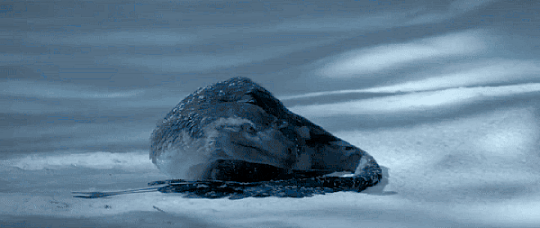




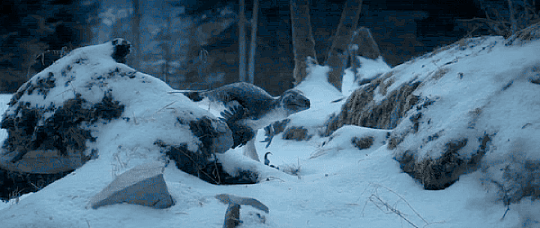

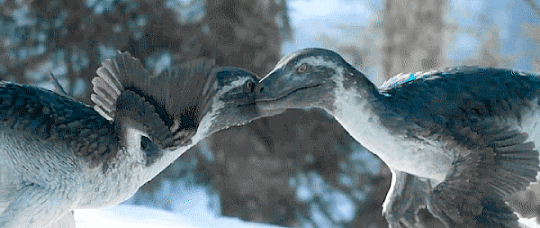


In the far North of America, this tiny hunter, a dromaeosaur, has managed to survive three months of near-total darkness. And now, at last, spring has come. She has a coat of feathers, for she’s able to generate heat in her body, and needs to retain all she can. A challenge for all dinosaurs in these cold latitudes.
#documentaryedit#prehistoric planet#my edit#dromaeosaurs were my first feathered dino I saw on screen way back when When Dinosaurs Roamed America came out#they were also pretty killing-machine-esque#the change in how they're depicted here...<3
9K notes
·
View notes
Text
On the subject of Dinosaur Documentaries...
So Life On Our Planet dropped a few days ago, another installment of this seeming boom of these kind of shows since Prehistoric Planet last year, and it got me thinking about this whole little niche genre.
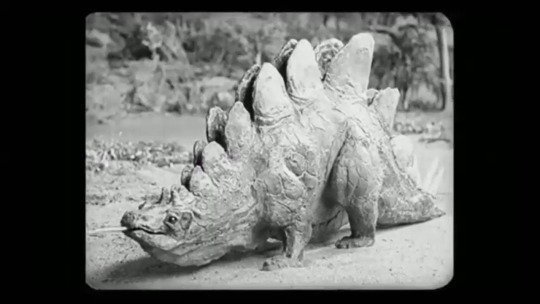
The very first "Paleodoc" was released in 1922, made by the Carnegie Museum of Natural History to educate museum goers on how the fossils they saw were collected and prepared. This began the format I like to call the "Talking Heads" Paleodoc which is mainly in the form of interviews or narration over actual footage of Paleontologists at work with the occasional "Live" Dinosaur for visual aid. These are by far the most common form of dinosaur documentary you'll find, even today, mainly because they're cheap to produce and fit in the general style of most science documentaries.
For many decades throughout the 20th century, Paleodocs were pretty rare. They would pop up time to time, and with the sudden influx of attention they got after Jurassic Park, we got some really good ones. Yet they were all the same Talking Head types. What really changed the game was the good ol Magnum Opus of the field: Walking With Dinosaurs.
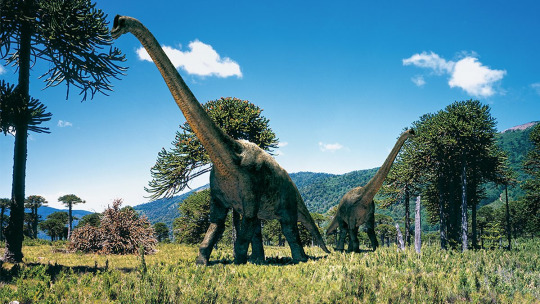
WWD pioneered the second type of Paleodoc I believe to exist, which are the "In Their World" Paleodocs. These are different in the fact they focus almost entirely on the live visual aids, with the human presence being limited to narration or brief pauses for context. They're meant to simulate the modern nature documentary, like Planet Earth, that focus more on showcasing animal behavior with state of the art filming techniques than being a source of in-depth science.
The success of WWD cannot be overstated, and I have to say I do find the In Their World format a lot more engaging and easier to connect with. They portray the wonder of prehistory spectacularly, letting audiences get emotionally connected in the animal characters the story creates, even if this has lead to criticisms of anthropomorphism. These programs also almost always use real footage of modern day earth for their prehistoric creatures to roam on, which I'm sure is very sad for the people who want to see their favorite dead plants on screen.
The Walking With... series would expand into sequels and spin-offs and Nigel Marven, and other companies like Discovery would jump on the bandwagon and release their own takes on the concept, but by the mid 2010s the format had basically died out. We'd get one or In Their World style doc every few years until we just didn't get anything. Outside of the occasional TV special that reused When Dinosaurs Roamed America footage, it was empty.
It took until Disney's Live Action remake of The Lion King of all things for that pendulum to start swinging again. Seeing those expressionless CGI cats got Jon Favreau thinking about how he could use this technology and the talented people behind it to make something really cool, and we got Prehistoric Planet.
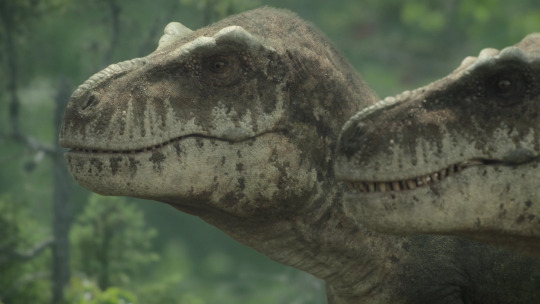
And, in a repeat of Walking With Dinosaurs, we're seeing more of these In Their World type shows. The original guys behind WWD are even making a comeback with their own series, Surviving Earth. Plus even more little hints and rumors of massive incoming projects from overexcited paleontologists trying not to break their embargo.
It looks like the 2020s will be another resurgence in these types of spectacle Paleodocs, and while a good ol Talking Head will always be there, I can't help but get excited for these animated spectacles and all the weird and wonderful ways they flash those visual aids across our TV screens.
161 notes
·
View notes
Text
Germany returns 'stolen' dinosaur fossil to Brazil
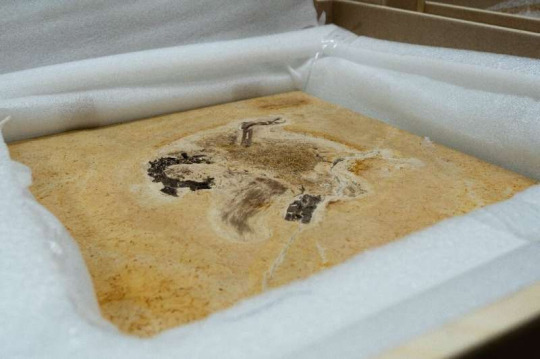
A fossil from a rare dinosaur that roamed South America 110 million years ago has been returned to Brazil from Germany, ending a diplomatic spat triggered by charges that researchers stole it.
The small dino, called Ubirajara jubatus, which had an early form of feathers and spearlike rods jutting from its shoulders, fascinated scientists, who identified it as previously unknown species in a paper published in 2020.
But it soon sparked a scientific and ethical scandal, when Brazilian researchers accused the German team behind the paper of illegally removing the fossil from Brazil.
After a nearly three-year standoff, a delegation led by German Foreign Minister Annalena Baerbock returned the fossil Sunday during a visit to Brasilia, officials said.
Continue reading.
#brazil#germany#politics#science#biology#paleontology#brazilian politics#german politics#international politics#mod nise da silveira#image description in alt
218 notes
·
View notes
Text

First tyrannosaur fossil discovered with its last meal perfectly preserved in its stomach
Researchers have found a tyrannosaur’s last meal perfectly preserved inside its stomach cavity.
What was on the menu 75 million years ago? The hind legs of two baby dinosaurs, according to new research on the fossil published Friday in the journal Science Advances.
Dinosaur guts and hard evidence of their diets are rarely preserved in the fossil record, and it is the first time the stomach contents of a tyrannosaur have been uncovered.
The revelation makes this discovery particularly exciting, said co-lead author Darla Zelenitsky, a paleontologist and associate professor at the University of Calgary in Alberta.
“Tyrannosaurs are these large predatory species that roamed Alberta, and North America, during the late Cretaceous. These were the iconic apex or top predators that we’ve all seen in movies, books and museums. They walked on two legs (and) had very short arms,” Zelenitsky said.
“It was a cousin of T. rex, which came later in time, 68 to 66 million years ago. T. rex is the biggest of the tyrannosaurs, Gorgosaurus was a little bit smaller, maybe full grown would have been 9, 10 meters (33 feet).”
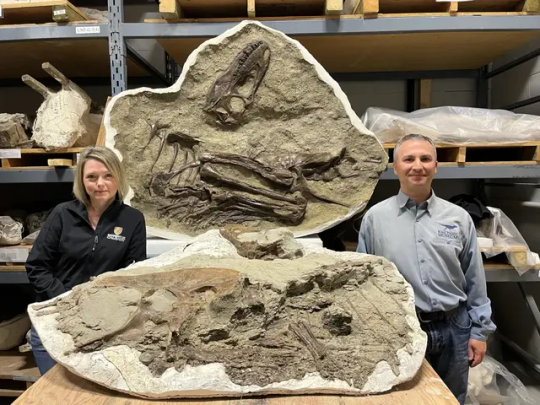
The tyrannosaur in question, a young Gorgosaurus libratus, would have weighed about 772 pounds (350 kilograms) — less than a horse — and reached 13 feet (4 meters) in length at the time of death.
The creature was between the ages of 5 and 7 and appeared to be picky in what it consumed, Zelenitsky said.
“Its last and second-to-last meal were these little birdlike dinosaurs, Citipes, and the tyrannosaur actually only ate the hind limbs of each of these prey items. There’s really no other skeletal remains of these predators within the stomach cavity. It’s just the hind legs.
“It must have killed … both of these Citipes at different times and then ripped off the hind legs and ate those and left the rest of the carcasses,” she added. “Obviously this teenager had an appetite for drumsticks.”

The two baby dinosaurs both belonged to the species called Citipes elegans and would have been younger than 1 year old when the tyrannosaur hunted them down, the researchers determined.
The almost complete skeleton was found in Alberta’s Dinosaur Provincial Park in 2009.
That the tyrannosaur’s stomach contents were preserved wasn’t immediately obvious, but staff at the Royal Tyrrell Museum in Drumheller, Alberta, noticed small protruding bones when preparing the fossil in the lab and removed a rock within its rib cage to take a closer look.
“Lo and behold, the complete hind legs of two baby dinosaurs, both under a year old, were present in its stomach,” said co-lead author François Therrien, the museum’s curator of dinosaur paleoecology, in a statement.
The paleontologists were able to determine the ages of both the predator and its prey by analyzing thin slices sampled from the fossilized bones.
“There’s growth marks like the rings of a tree. And we can essentially tell how old a dinosaur is from looking at those, the structure of the bone,” Zelenitsky said.
Changing appetites of top predators
The fossil is the first hard evidence of a long-suspected dietary pattern among large predatory dinosaurs, said paleoecologist Kat Schroeder, a postdoctoral researcher at Yale University’s department of Earth and planetary science, who wasn’t involved in the research.
The teen tyrannosaur didn’t eat what its parents did. Paleontologists believe its diet would have changed over its life span.
“Large, robust tyrannosaurs like T. rex have bite forces strong enough to hit bone when eating, and so we know they bit into megaherbivores like Triceratops,” Schroeder said via email. “Juvenile tyrannosaurs can’t bite as deep, and therefore don’t leave such feeding traces.”
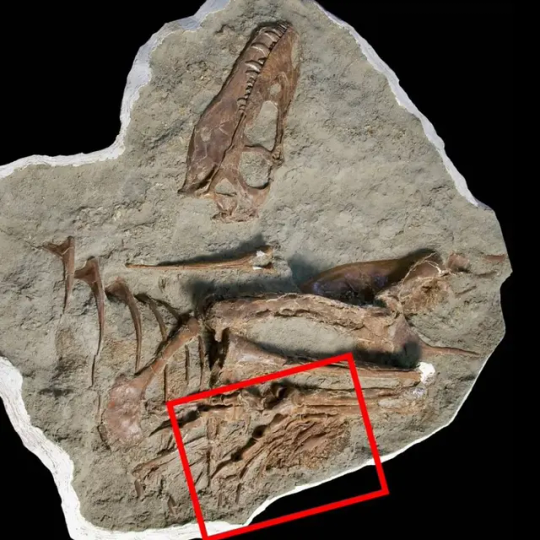
She said that scientists have previously hypothesized that young tyrannosaurs had different diets from fully developed adults, but the fossil find marks the first time researchers have direct evidence.
“Combined with the relative rarity of juvenile tyrannosaur skeletons, this fossil is very significant,” Schroeder added. “Teeth can only tell us so much about the diet of extinct animals, so finding stomach contents is like picking up the proverbial ‘smoking gun.’”
The contents of the tyrannosaur’s stomach cavity revealed that at this stage in life, juveniles were hunting swift, small prey. It was likely because the predator’s body wasn’t yet well-suited for bigger prey, Zelenitsky said.
“It’s well known that tyrannosaurs changed a lot during growth, from slender forms to these robust, bone-crushing dinosaurs, and we know that this change was related to feeding behavior.”
When the dinosaur died, its mass was only 10% of that of an adult Gorgosaurus, she said.
How juvenile tyrannosaurs filled a niche
The voracious appetite of teenage tyrannosaurs and other carnivores has been thought to explain a puzzling feature of dinosaur diversity.
There are relatively few small and midsize dinosaurs in the fossil record, particularly in the Mid- to Late Cretaceous Period — something paleontologists have determined is due to the hunting activities of young tyrannosaurs.
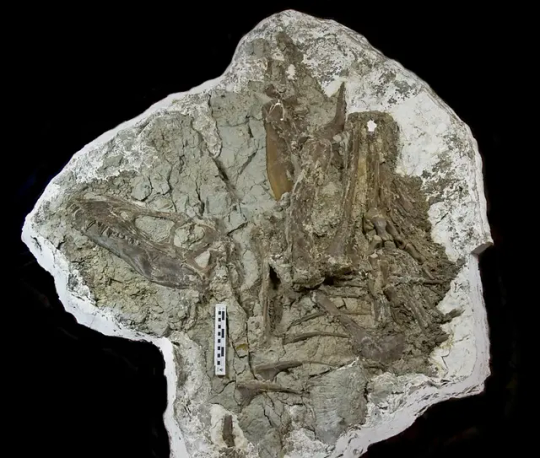
“In Alberta’s Dinosaur Provincial Park, where this specimen is from, we have a very well sampled formation. And so we have a pretty good idea of the ecosystem there. Over 50 species of dinosaurs,” Zelenitsky said.
“We are missing mid-sized … predators from that ecosystem. So yeah, there’s been the hypothesis that, the juvenile tyrannosaurs filled that niche.”
By Katie Hunt.


#First tyrannosaur fossil discovered with its last meal perfectly preserved in its stomach#tyrannosaur#Gorgosaurus libratus#Citipes#Citipes elegans#dinosaurs#paleontologist#Alberta’s Dinosaur Provincial Park#archeology#archeolgst#history#history news#ancient history
77 notes
·
View notes
Text
Discovery Doc includes When Dinosaurs Roamed America, Dinosaur Planet, and Dinosaur Revolution (including deleted scenes from DR, for reasons.)
#dinosaur revolution#when dinosaurs roamed america#dinosaur planet#palaeoblr#dinosaurs#prehistoric life#Repenomamus
152 notes
·
View notes
Text
So we know about dragons in the Napoleonic Wars
but do we know about

dinosaurs
in the napoleonic wars
Fifteen year old Willem lives in hiding in a small Belgian village on the edge of the great Sonian Forest. Willem and his mother have been living in secret for most of his life, since his father, a famous magician, fell out of favour with the French Emperor Napoleon Bonaparte.
It is a world not much different from our own, in which small 'saurs' are a part of everyday life. Some are farmed, some are pets, others, more dangerous are avoided. There are rumours of even greater 'saurs' roaming the uncharted islands of the Americas.
When a girl from the village is killed, it becomes obvious that there are hidden terrors in the forest and that they are connected with Napoleon's plans to conquer Europe.
But Willem has a secret that could interfere with the emperor's plans and Napoléon will stop at nothing to find him.
War is coming, and young Willem is no longer safe, for Gaillemarde is just a stone's throw from the fields of Waterloo -- fields which will soon run red with blood.
(Amazon Link)
Frankly, as this appears to be written in New Zealand, I consider this to be a win for us Oceanic Napoleonic Enjoyers and napoleonic scalies
#if i find this i may read it but i am kind of lazy about books right now#napoleonic shitposting#napoleonic shitpost#napoleonic wars#cadmus rambles#cad rambles about dead frenchmen on main
43 notes
·
View notes
Text
T. rex Madness Round 1 Masterpost

All round 1 polls are here!
Prehistoric Planet (Hank) vs. Dinosaur Office (Terry)
Extreme Dinosaurs (T-Bone) vs Doctor Who (Deep Breath T. rex)
Fossil Specimen (Black Beauty: RTMP 81.6.1) vs There Are Tyrannosaurs Trying On Pants in My Bedroom
DC Comics (Batcave T. rex) vs Old grocery store T. rex toy
Doraemon: Nobita’s Dinosaur (T. rex) vs Ice Age (Momma Dino)
Dinosaur Revolution (Junior) vs Dinosaur Island (2014/2015)
Prehistoric Park (Terrence) vs Barney (Barney)
T. Rex the band vs. Prehistoric Park (Matilda)
Digimon (Tyrannomon) vs. Prehistoric Kingdom T. rex
Project for Awesome (T. Rax) vs. Safari Ltd. Feathered T. rex
You are Umasou (Heart) vs. Fossil Specimen (Jane BMRP 2002.4.1)
Jurassic Park (Rexy) vs. Dinosaurs (Roy Hess)
Night at the Museum (Rexy) vs. The Lost World (1925)
Beast Wars (Megatron) vs. Chrome game T. rex
Pokémon (Tyranitar) vs. Pokémon (Tyrantrum)
Fossil Specimen (Stan BHI 3033) vs. Toy Story (Rex)
Charles Knight T. rex vs. Transformers (Grimlock)
Theodore Rex (Theodore Rex) vs. Walking With (Mother T. rex)
Super Mario Odyssey (T. rex) vs. Banjo Tooie (T. rex Banjo)
Fossil Specimen (Sue FMNH PR 2081) vs. Jimmy Neutron “Sorry, Wrong Era” T. rex
King Kong 1933 (Tyrannosaurus rex) vs. Mighty Morphin’ Power Rangers (Tyrannosaurus Dinozord)
Marvel Comics (Devil Dinosaur) vs. Fossil Specimen (Rexy AMNH 5027)
When Dinosaurs Roamed America (Narrated by John Goodman) vs. We’re Back! (Rex, voiced by John Goodman)
The Magic School Bus (T. rex) vs. Sinclair Dinoland 1964 World’s Fair
King of the Dinosaurs by Michael Berenstain vs. Dinosaur Train (Buddy)
The Good Dinosaur (Ramsey) vs. Meet the Robinsons (Tiny)
Fossil Specimen (B-rex: MOR 1125) vs. Primal (Fang)
The Land Before Time (Chomper) vs. Project G.e.e.K.e.R. (Noah)
Saurian T. rex vs. Gravity Falls (T. rex in amber)
Jurassic Park (Lost World family) vs. 3D Dinosaur Adventure (Assembled T. rex)
Fantasia (Rite of Spring T. rex) vs. Prehysteria! (Elvis)
Yu-Gi-Oh! (Ultimate Conductor Tyranno) vs. Prehistoric Planet (Flirt Man)
87 notes
·
View notes
Photo


When Dinosaurs Roamed America (2001) VHS tape
[ x ]
59 notes
·
View notes
Note
BIG big fan of your Opera as the dragon, Theatre Is An Aminal framing. However in the dinosaur post I think you're doing theatre and its many voices a disservice. The height of the 'golden era' of Greek theatre (Athens ofc) was around the 500s BCE to the 200s BCE. Sanskrit drama (Nritya) in India (which became popularized in China and other regions as well) was thriving with music, dance, costumes and narrative well before that in as early as the 1500s BCE. The Mayans in Central America have theatre dating back to pre-colonial times as well (some, such as the Rabinal Acchi, also incredibly heavy with music and dance, have survived to the present), and their civilization traces its origins to 1500s BCE, which suggests that (while we no longer have access to these productions due to destruction of art/langauge/typical colonization fare) they also had robust, complex theatre well before the Greeks.
I ask only that you think about who benefits when we are taught that the "invention" of such a great, all-encompassing artform is owed solely to the same culture considered to be the seat of all Western European greatness/civilized-ness. I invite you to question the silences that exist in our understanding of history and art! Enjoy your day, I love your posts <3
this past spring i took a course on non-western theatre and particularly how the (largely western perspective) archive and repertoire harm our understanding of them. it is fascinating and i love seeing how theatre varies across different cultures (as well as the surprising similarities between many kinds of theatre that hint at our similarities as a shared species).
when i compare greek theatre to a dinosaur, i don’t mean that in the sense of all theatre descending from it- not at all! i consider it in the sense that a dinosaur was one animal of very many from the ancient world that have given rise to modern biodiversity. the dinosaur was not the first or the last of ancient animals, nor was it even the first in its own line- they themselves were the descendants of sauropsids, which themselves shared the world with synapsids (which eventually became mammals)! greek theatre was just one of many theatre systems that together forged a vast, diverse theatrical ecosystem with other cultures from around the world; and while (like dinosaurs) it may have staying power in western culture as the quissisential Extinct Thing, it is by no means the only kind of theatre that has ever existed then or now, and claiming greek theatre is the Only root of theatre is as silly as claiming dinosaurs were the first animals and also the only animals who roamed the earth in their time.
opera- and musical theatre- both stem, in their own ways, primarily from (our warped understanding of) Greek theatre, which is where the connection there comes from. but when i compare greek theatre to a dinosaur i am by no means saying that is the only or the first kind of ancient theatre- no ecosystem has ever been one family of animal, in both biology and in the theatre.
7 notes
·
View notes